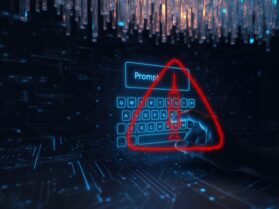In today's technology-connected world, our lives and businesses are dependent on digital technology. We use computers, phones, and the Internet for everything from simple bank balance checks to successfully running huge multinational companies. Think of your business as a castle: high walls (your firewalls), a deep moat (your network security), and strong gates (your passwords).
For a long period of time, we thought that was enough to keep the bad guys out. The thing is, today the biggest threat does not come from someone trying to break down the front gate. It comes from a sly trickster who convinces someone inside the castle to open a side door for them.
The "trickster" in today's digital world is a hacker, and the "open door" means a simple mistake made by a well-meaning employee. And that is where the real first line of defense comes in, which is not a piece of software. It is your people. And the tool that enables them is security awareness training.
This is not about making everyone a computer expert. It is about giving every single person the confidence to spot a digital trick and avoid it in your company. Also, this way it builds a human firewall that is alert, smart, and resilient.
The Locked Door is Useless if Someone Hands Over the Key.
Now, let's be clear about what we are up against. Hackers usually take the easy route. Instead of breaking through strong security, they try to trick you into giving them access. Their favorite trick? Phishing, pretending to be someone you trust to steal your information.
Phishing means when a hacker sends text, message or an email. it appears to be real. It could appear to be from your boss, your bank, or any other popular delivery service. That message creates a sense of urgency: your password has been compromised; please confirm this delivery now, or another similar idea, thus deceiving the victim into clicking on a bad link or opening a dangerous attachment.
According to a report by the FBI in 2023, it is the most common kind of cybercrime. Phishing scams cost billions of dollars. Why such popularity? Because it works. It preys on human nature, our desire to be helpful, our fear of getting in trouble, and our tendency to rush.
No antivirus software in the world can completely stop an employee from deciding to click on a link that looks just fine. Only effective security awareness training can do that. It teaches people to pause, look for the signs of a trick, and think before they click.
What Exactly is Security Awareness Training?
You may think that Security Awareness Training is some boring technical lecture about complex computer terms. It shouldn't be. When done correctly, it is the opposite.
Think of it like learning to drive a car. You don't have to be a mechanic to be a safe driver. You just need to know the rules of the road: check your mirrors, use your turn signals, and stop at red lights. Security Awareness Training is the "rules of the road" for using technology safely at work. It covers practical, everyday topics like:
- How to Identify Phishing Emails: By checking the actual email address of the sender, spelling mistakes, and unexpected requests.
- How to Create Strong Passwords: Why "password123" is a bad idea and how to come up with a strong, unique password, or use a password manager.
- Using Company Devices Safely: The risks of using public Wi-Fi for work and the importance of keeping software updated.
- Handling Data Responsibly: Understand which information is sensitive to the company and why it should not be sent out to personal email accounts.
Good security awareness training is not an event; it is a conversation. It is built upon real-life examples, simulated phishing tests, where the company safely sends fake phishing e-mails to practice on, and short, engaging videos that keep security at the front of everyone's mind.
The Ripple Effect: How Training Protects More Than Just Data
Investing in Security Awareness Training does far more than just stopping the hackers; it creates a culture of security that benefits the whole company.
- It empowers your employees: Instead of feeling like the weakest link, employees become confident and empowered. They know how to protect themselves and the company. This reduces stress and makes them active participants in company safety.
- It safeguards your money and Reputation: One cyberattack can be catastrophic. The cost isn't just about paying a ransom or fixing systems. It is about the damage to your reputation. Will your clients trust you with their data after a breach? Security Awareness Training is a lot cheaper than cleaning up after an attack.
- It Helps You Follow the Rules: Many industries have strict rules about protecting customer data, such as healthcare or finance. A strong security awareness training program demonstrates that you are taking those responsibilities seriously, potentially helping you avoid legal trouble and possible fines.
Building Your Human Firewall: A Simple Start
Starting Security Awareness Training is easy and affordable. Here are a few simple steps any business can follow:
Lead from the top: When managers and leaders talk about and participate in security training, it shows everyone that it is a priority.
Relatability: Use stories and examples that relate to the specific industry. Training will be a little different for hospital workers than for construction company workers.
Keep It Positive: Never penalize anyone for mistakes during training simulations, but rather treat those moments as learning opportunities. Remember, the purpose is to teach, not to instill fear.
Schedule Regular Refreshers: People forget. A short, 15-minute session every few months is more effective than a four-hour workshop once a year.
Conclusion: Your Most Valuable Asset is Your Best Defense
Ultimately, the strongest firewall and most sophisticated security software can only go so far. The real first line of defense is, and will always be, the people using the technology every day. With constant investment in engaging Security Awareness Training, you are not simply checking off the box for compliance.
You turn your team from a potential target to a strong, united shield. You are building a workplace where everyone feels responsible for the security and has the knowledge to act wisely. In the ongoing fight against cyber threats, an educated and alert employee is the most valuable asset any company can possess. Build your human firewall now.
To learn more, visit SecureITWorld!
FAQs
Q1. What is security awareness training?
Answer: Security awareness training is a program that teaches employees how to recognize and prevent security risks.
Q2. What is a security awareness course?
Answer: Security awareness course is a structured set of lessons designed to provide that training.
Q3. What are the 5 C's in security?
Answer: Compliance, coverage, change, continuity, and cost, these are 5 C's in security.
Q4. What are 4 types of security training?
Answer: Four types of security trainings are:
- classroom training
- cloud training
- video training
- simulation training
Recommended Reading:
AI Email Security Solutions for Businesses
What are some common security measures taken by companies to protect customer data?
Key Security Challenges and Solutions for Ensuring Data Privacy on Internet of Things (IoT)






